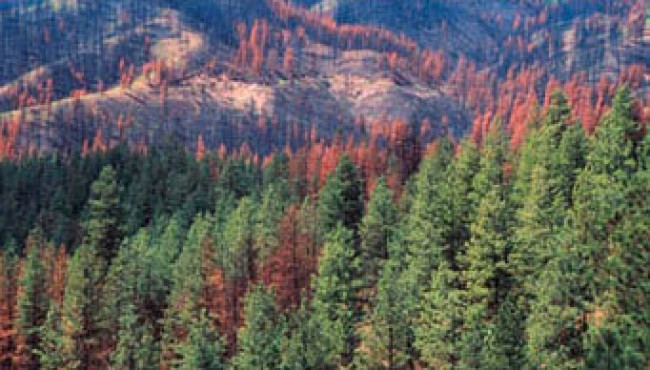One year after the Washington Department of Natural Resources signed a “Good Neighbor” agreement with the U.S. Forest Service, the landmark forest management deal is moving forward with new state legislation and strong support from Washington Public Lands Commissioner Hilary Franz.
In March 2017, DNR signed a Good Neighbor agreement with the Forest Service to allow the state to complete forest management projects on federal land.
“There is a lot of work that needs to be done, and no agency or organization can do it alone,” said (U.S. Forest Service Regional Forester Jim Peña.) “This Good Neighbor Authority agreement is a model for how the Forest Service can work together with state partners and communities more effectively—a win-win for the health of our forests and Washingtonians.”
The Nature Conservancy, an environmental group, lauded the agreement.
The Good Neighbor Master Agreement allows DNR and USFS to work together across boundaries and ownership types to collaboratively approach restoration on some of our state’s most iconic landscapes. The agreement allows for more efficient use of federal and state resources, including funding and staff expertise, to benefit public lands under different types of ownership. Economic benefits extend to residents of the communities that depend on resilient forests through job creation and marketing of sustainably harvested timber and wood products.
Then this year the Washington Legislature passed a bill – supported by the Washington Forest Protection Association – that allows DNR to allocate money for the Good Neighbor projects on federal forestland.
“Most of the laws created this year won’t take effect until June, but with important forest health projects ready to go, we designed this legislation to become law upon the governor’s signature, which helps everything get established sooner,” (said the bill’s sponsor, Sen. Brad Hawkins, R-East Wenatchee.) “I am thrilled by the strong bipartisan legislative support this received, because the sooner these cooperative efforts can move forward, the better.”
“I want to thank Senator Hawkins for being such a determined advocate for Washington’s forests,” said Commissioner of Public Lands Hilary Franz. “With this account now officially in place, I’m excited to put Department of Natural Resources crews right to work making all of Washington’s forests healthier, more productive and more resilient.”
In the latest news, Spokane Public Radio asked Commissioner Franz this week about the Good Neighbor agreement and its vast benefits for forest health and wildfire protection.
“It is very clear that if we don’t work with our federal partners and if we aren’t able to get on federal lands and do the forest health treatments on federal lands that we’re doing on our state lands, then we will continue to face the catastrophic wildfires that we saw in 2014 and 2015 that cost our state over $500 million and burnt over a million acres of forest and ag land,” (Commissioner Franz said.) “We will continue to face the challenge of our forest health and disease and insect infestations crossing. And so that’s why this has to be something that isn’t just focused on state lands, but must be focused on our federal lands and the Good Neighbor Authority gives us that opportunity.”
…“We have a responsibility to be engaging with the public, engaging with our communities on the forest health crisis and the issue of how prevalent it is, how significant it is and how no action or not treating these lands is not an acceptable answer, because it will actually lead to further environmental degradation, not only the forests dying that are critical and valuable to clean water, clean air and for carbon sequestration,” Franz said. “But we will also have even further environmental catastrophe and degradation as we see wildfires filling our air with smoke, polluting our waters and killing our wildlife and habitat.
“The authority that we signed, the agreement that we signed, is larger than just forest health treatments,” she said. “It actually enables us to do wildlife and aquatic habitat restoration, where we’re actually able to go in on our federal lands and be able to start to restore some of the habitat area there for salmon and other wildlife that have just been challenged and they haven’t had the resources to do. It also enables us to extend our monitoring and research projects and learning about critical habitat and wildlife needs, as well as the opportunity to expand recreation for hikers and birdwatchers and other recreationists so they can actually grow the passion for our natural resources.
“We all know that state and federal governments have limited resources and limited capacity and the more that we’re partnering together and working together, then we can get greater efficiencies and economies of scale,” Franz said. “So if I already have people on the ground on state land doing habitat restoration work or I have people on the ground doing forest health work, let’s be able to cross those boundaries and continue to be able to take care of the federal area as well as the state area. And as we know, just like wildfires, just like forest health issues, wildlife also crosses jurisdictional boundaries and this creates an opportunity for us to finally be operating in a way that it’s about an ecosystem and how it functions and it will function better, rather than jurisdictional lines.”
